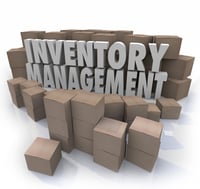
With the right distribution software in place, you can control costs and manage your inventory more effectively. Distribution software includes tools for inventory tracking and management, order processing, supply chain management, sales, CRM, and more. Let’s focus on how distribution software helps with inventory management.
Best Practices for Inventory Management
With the right inventory management practices in place, your entire business will run more smoothly. The following inventory management best practices can be put into place to ensure that your warehouse is well-stocked without being overstocked, and inventory levels are managed appropriately. Distribution software that tracks inventory can be used to:
- Project inventory levels. Good distribution software often includes forecasting reports that can be used to project inventory levels. This is especially useful when you have recurring orders and need to keep specific items in stock. Reports that help you forecast demand can help you re-order the right materials to meet customer orders.
- Track inventory. Accurate inventory tracking ensures that the stock counts in your distribution software are up to date. Teach your staff how to use barcode scanners and other time-saving equipment in the warehouse to ensure that your systems report current, real-time inventory.
- Prioritize item reorders. When you know what’s in stock and what’s low, you can prioritize reorders and restocks around low inventory items. Software with real-time reporting capabilities can help you prioritize.
- Replace spreadsheets: Spreadsheets require manual data entry and are prone to errors. Real-time, accurate distribution software enables you to do so much more. It’s time to replace old-fashioned spreadsheets with robust reporting and management tools that offer data for insights and action.
- Avoid spoilage: If you manage items that can spoil, such as ingredients, food products, chemicals, pharmaceutical inventory, or other items with a dated shelf life, be sure to use FIFO (first in, first out) inventory methods. Keep careful track of the expiration dates on your items to avoid spoilage.
- Create contingency plans: While your goal is to keep inventory levels at the right levels, there are going to be times when demand outstrips supply. Plan for emergencies. Line up extra suppliers now and budget for rush shipping charges, if necessary, to accommodate customer
- Audit regularly: Audit your inventory and reconcile records to actual inventory quarterly. The more frequently you audit your inventory, the better you will get at managing it for maximum efficiency.
Since 2002, PositiveVision has helped companies around the Chicago area find the right distribution software for their needs. Inventory control, sales, purchase orders, and other aspects of distribution are integral to your company’s success. We understand this and can help you find the best software for your business. To learn more, visit our Distribution Software page. Learn more about PositiveVision or contact us today.


 © 2019 PositiveVision • 219 E. Thorndale Ave. Roselle, IL 60172
© 2019 PositiveVision • 219 E. Thorndale Ave. Roselle, IL 60172